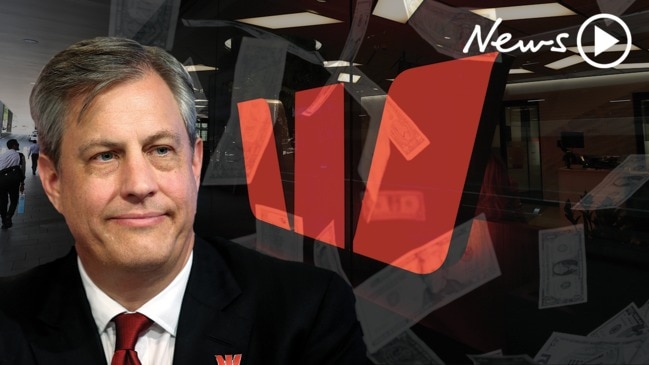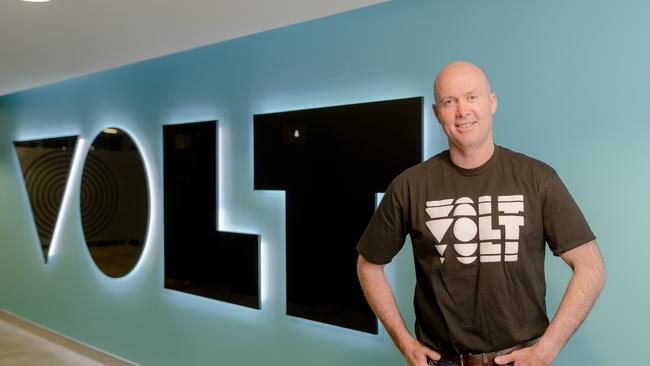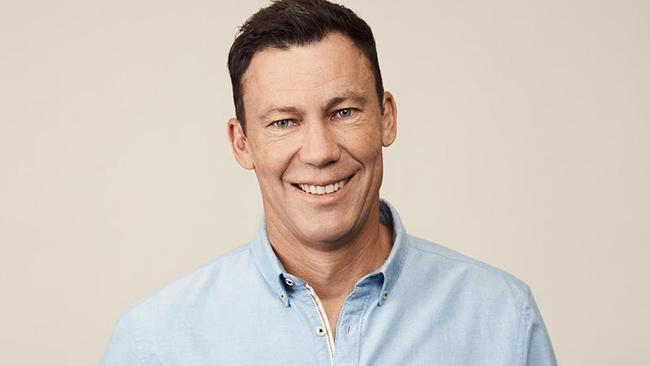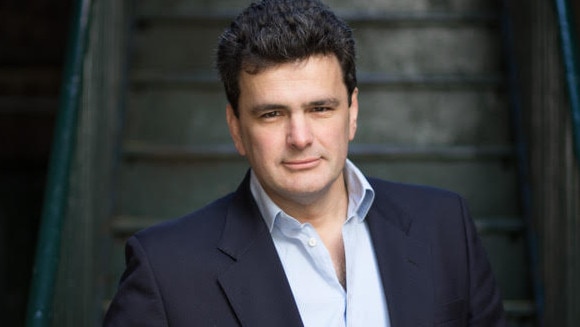New kids on the block ready to take on Australia’s big four banks
The new entrants to the banking industry not only offer Australians the best way to save money but are also entirely digital.

Banking
Don't miss out on the headlines from Banking. Followed categories will be added to My News.
The newest entrants to Australia’s banking industry are offering something the biggest banks can’t – a better way to save money.
Australians have watched interest rates crash for the past year and their big-bank savings accounts earn little to no money.
Currently, Australian banks offer effectively two types of interest rates to consumers – a base rate and a special rate.
The base rate is the everyday rate open to all customers, but a special rate is only applied if a customer follows certain rules.
For some, those rules are as simple as requiring a customer to deposit a certain amount each month or make several transactions.
But for banks like Westpac, Commonwealth, ANZ and NAB, the special rates are only available for new customers.
Customers may sign on to a big bank’s rate of between 1.5 per cent and 1.66 per cent, but after a few months that interest drops significantly to the base rate of between 0.01 and 0.45 per cent.
Meanwhile, new entrants 86 400, Xinja, Volt and Up all offer rates between 2.15 per cent and 2.25 per cent.
These new banks, referred to in Australia as neobanks, are entirely online and by removing branches and legacy systems are able to pass on their savings to customers.
Up and 86 400 both offer a special interest rate of 2.25 per cent, but even their base rates of 0.5 and 0.4 per cent respectively are higher than those offered at the majors.
Volt and Xinja, meanwhile, don’t offer special rates. Instead, consumers instantly get access to the higher base rates of 2.15 per cent and 2.25 per cent respectively.
Volt CEO Steve Weston said more banks should abandon the practice of special rates.

“We wanted to get rid of the old banking approach of special interest rates and instead just give consumers instant access to the best rate possible,” Mr Weston said.
He said the only reason banks held onto the special rates was because “that’s just the way it’s always been done”.
“It isn’t illegal and it’s not hidden but it can be hard to compare interest rates and the big banks know that, which is why they keep doing it,” he said.
Xinja CEO Eric Wilson agreed with Mr Weston and said Xinja’s base rate had caught many people off-guard.
“The number one call to our call centre is from consumers asking us what the catch with our base rate is,” Mr Wilson said.
“That’s a really damning indictment that people really mistrust banks. People immediately think there is something wrong, so how do we get trust? We earn it by doing the right thing.”
Two of the neobanks still have special rates, with Up requiring users to make five transactions a month to access the 2.25 per cent rate, while 86 400 requires a deposit of $1000 a month for the rate.
Up co-founder Dominic Pym told news.com.au that Up was the first neobank to the market and that their special rate had been the best in the market.

“We were the first to market and now the other banks have matched our rate because they had to, so we were a path leader,” he said.
Mr Pym rejected the idea that just offering a high base rate was what banks needed to do for their customers.
“There are better things to do with money than just dump it in an account to earn money, and people that are doing that either don’t understand money or aren’t good savers," he said.
Instead, Up offers a world-first pull-down feature where users just have to swipe down on their phone to autosave.
“No one carries around change anymore, but with our pull-to-save feature you can save your digital spare change,” Mr Pym said.
86,400 also offers a special interest rate across its recently launched multiple saving accounts, so any user that deposits $1000 in a month can earn the special rate of 2.25 per cent.
86 400 CEO Robert Bell told news.com.au that the bank actively wanted people to hit this rate and would even prompt users in order for them to get it.

“Our new savings product gives Australians the opportunity to get more from their money with market-leading interest rates and flexibility on how they arrange their savings,” he said.
“Plus, we’ll actively help them to earn the bonus interest rate each month.”
Mr Bell said that by enabling that feature more than 90 per cent of balances earnt the interest rate.
“We have already helped tens of thousands of customers ditch monthly fees and get a better savings rate thanks to helpful reminders which keep customers on track,” he said.
TRUST IN BANKS
A recent Roy Morgan survey found that Australia’s big four banks had all lost the trust of the Australian consumer, and the industry was, in fact, the country’s most mistrusted.
However, this level of mistrust in the big four is an opportunity for the neobanks according to Mr Bell, who believes the endless pursuit of profit by the big four has destroyed consumers trust.
“We have a huge opportunity to rebuild that trust by showing Australians what banking could – and should – be like,” Mr Bell said.
He recognised that as a new product 86 400 would have to work overtime to show Australians that it can be trusted.
“One of our core principles is that customer success equals business success,” he said.
“We’ve built a smartbank that puts the customer first every second of every day, with products designed to help them out, not catch them out.”

Mr Wilson said it went beyond statements and Xinja, like the other neobanks, had to prove themselves to consumers.
“When we screw up, which we will, Xinja will fix it straight away, publicly, and put our hand up and admit to it,” he said.
“There is no room for secrecy in banking anymore, it’s time to be open and transparent.”
Mr Pym called this the “new new trust” as neobanks came to market with the consumer’s pre-established trust of a bank to keep money safe but also with the new trust given to apps.
“That new trust for us is not just being a bank and keeping money safe but giving people empowerment of their finances, and it takes time, money and effort to build and requires excellence,” he said.
Mr Weston echoed those statements and said the newer players had a real chance to help Australians.
“We can show Australians that banks can help them reach their financial goals and that they can get a better deal,” he said.
Throw some confetti and sound the airhorns until your neighbours tell you to turn it down - WE HAVE OVER 1,000 VOLT SAVERS.
— Volt Bank (@voltbank) January 28, 2020
If you're still on the waitlist, don't worry, you've got an account coming your way (super soon). pic.twitter.com/86JBg27sEM
OPEN BANKING
Part of showing Australians a better way was due to emerge at the beginning of this year.
Open banking was set to roll out in Australia earlier this year but was delayed again late last year.
The scheme is designed to allow consumers to share their financial data between banks and other companies.
The eventual benefit is that consumers will be able to better compare their financial products, switch more easily and ultimately save money.
The delay to the scheme hasn’t stopped 86 400 from designing products that will let customers access better deals.
86 400 recently launched its energy switch service that allows customers to easily switch energy providers and get a better deal.
Launching next month, Energy Switch - the smart way to switch & save on your electricity bill. Built in partnership with Accurassi, the free service compares 200+ data points from your last bill to 100’s of plans & helps you switch in minutes https://t.co/rBGfboutkm #smartbank pic.twitter.com/2r9OzVqIj3
— 86 400 (@86400smartbank) January 13, 2020
“We’re committed to helping Australians take control of their money and will continue to roll out smart products and features which support that,” Mr Bell said.
Already 86 400 has an in-app feature that allowed users to connect accounts for a read-only view of their entire financial history.
By doing so, 86 400 can capture data and allow users to view their upcoming bills, subscriptions and direct debits across all their accounts to ensure they are not caught out.
This process, known as data scraping, is set to be popular before open banking begins, with Mr Weston confirming Volt will do the same.
“We will start with screen scraping so that we can promote better deals to our customers,” he said.
Meanwhile, at Up, Mr Pym said they were just getting on with the job of rolling out open banking features, and consumers could expect Up to be a leader.
We’re giving you double the shot at your double-shot â˜•ï¸ â€“ we’ve upped today’s #PerkUp prize money to $1,000!
— Up (@up_banking) December 19, 2019
Limited time only. Eligibility and terms apply: https://t.co/BuM2YVQUZY pic.twitter.com/tpX7CVUiNK
“Like the rest of our features we will be first to it and we will roll out our open banking features and the rest of the market will follow,” he said.
The bank just launched a new instant payment system that will let users create a custom name to use for payments.
“We are calling it Up Names and it’s really the next evolution on from PayID which let people pay using an email or mobile number,” Mr Pym said.
IT'S HERE! Say hello to Stash at 2.25% 👋 No ifs, no buts, no strings. Go stuff your Stash! 😉💰
— Xinja Bank (@xinjamoney) January 15, 2020
Learn more here https://t.co/WehuZUUibz#xinjabank #howmoneyshouldbe #ditchdadbanking #joinxinja #neobank #fintech pic.twitter.com/deolgZKu1c
Xinja, meanwhile, has just launched its savings “stash” account, with multiple accounts to be launched soon along with instant payments and loans to follow.
“The next four months for us is keeping our promises, and then we will be launching some sexy new products so people can get more from their money, and then we will focus on getting people out of debt quicker,” Mr Wilson said.
Originally published as New kids on the block ready to take on Australia’s big four banks
